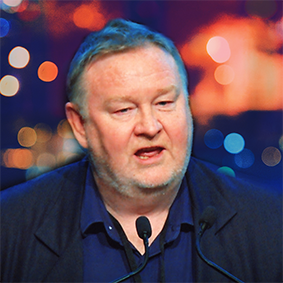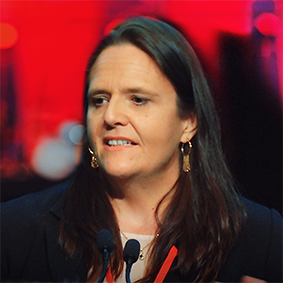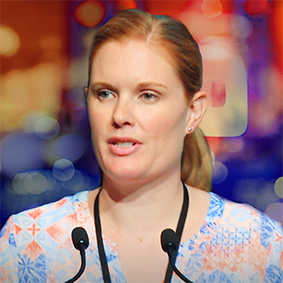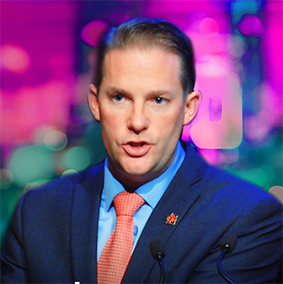ACCESS TALKS: HOW WE INCLUDE
Jody Carr is a pioneer of driving systemic inclusive education policy in New Brunswick, Canada. In this Access Talk Jody articulates the planning, implementation and sustaining phases that went into devising a fully inclusive education system. He highlights one of the fundamentals; an action plan, that was released on the same day as the planning report was presented to stakeholders.
This transcript has been corrected and edited slightly for clarity.
Caleb is 14. This past school year he was in grade eight and his whole class was eagerly anticipating their year-end trip to Quebec City. It’s an eight-hour bus ride and they spend four days enjoying the sights, building memories and enjoying friendships on the class-trip. You can imagine the excitement. Kids wait all year, they sometimes raise money, committees are formed for the year-end trip.
Caleb also has autism. He has a younger brother and has been included in his regular class trip, each and every year for his entire school experience. But a few months leading up to this year-end trip things started turning the other way. Caleb’s mum got word from the school that Caleb would not be able to go on the school trip. She was astonished.
When pushed and asked what the problem was and why the school first said, ‘Caleb couldn’t go because he wasn’t in the mandatory French second language class.’ When his mum pushed [further] the school did change its mind, but it wasn’t to allow Caleb on the trip, it was decided it wasn’t really the French language class but that Caleb couldn’t go because they didn’t think he could handle an eight-hour trip without having a violent episode. They were worried he’d have an outburst and hurt someone.
You know, like images of cages in your mind. The savage kids, that burst out in anger and violence. As you would expect, Caleb’s parents couldn’t believe it. So they fought it.
Caleb’s mum used her local inclusion family advocacy chapter. Time was running out. The trip was fast approaching. Now we were within weeks. She hadn’t told Caleb that he wasn’t allowed to go on the trip. She was still hoping that the school will change its mind. After three meetings with the regional director, still no luck. The regional director supported the principal of the school. The district was not budging. So she filed a complaint to the Human Rights Commission.
She offered to go on the bus with him. But the best the school would go for would be for his mum to drive Caleb in her car, following behind in a separate vehicle and that he only go on three of the nine activities.
That’s when Caleb’s mum called me, as former Minister of Education. She told me about this and I said, “So what do you think about that response?” Not wanting to steer her in the right or wrong direction. She said, “I don’t feel good about it one bit.” I said, “Damn right you don’t. And I’m there with you and we’re going to fight this.”
Caleb has a type of autism that leads him to retreating inward when he is overwhelmed or over stimulated. The funny thing is, he had never been violent towards classmates or anyone else; ever but the school said there was a problem he had had on a bus in his file.
We come to find out it was in grade two, never violent. He had had trouble getting on the bus, to climb up the stairs. That was the problem. They failed to ask the questions and I said to the regional director, “Do you have any documents? Do you have any incident reports? What type of problems were these?
So, I contacted the Secretary of Education, at home [Canada] we call it the Deputy Minister, and told him that there was a duty under Policy 322, our Inclusion Policy, that not only must schools be inclusive but school trips too. Schools must provide reasonable accommodation for their individual needs, that any removal from the common learning environment must be properly justified based on demonstrated undue hardship. And guess what? We got Caleb on the bus.
Caleb got to go on the school trip and had the trip of a lifetime. He also got to attend all of the nine activities. And you know what? There wasn’t one incident. We couldn’t be prouder. I know that for the whole weekend I held my breath hoping and making sure that nothing would go astray and it didn’t.
Even better with this story is that Caleb’s mum told me the chairperson–the mother who was chairing the fundraising committee at the school for the trip–told her just before we got the word that, “if he isn’t allowed to go on the trip, the morning the bus leaves out of the school parking lot, us parents will tell the bus driver to stop and go no further until Caleb is allowed on the bus.”
That is the magic of inclusive education to me. The rest of the parents were standing in solidarity for Caleb and Caleb’s mum. And that’s what we want for every single school. How far we’ve come to now have the other parents advocating. I tell you this story to illustrate how powerful good legislation and policy can be. All kids starting in regular classes no exceptions, that’s what we do in New Brunswick.
All children are welcome. Teachers respond to different learning styles. Teachers present lessons in different ways so all children, that learn differently, can learn. And you can provide the resources that are available for individualised learning. Why? Because we know it’s better educationally, economically, and socially.
Catalyst for change is the political will, teachers that need help and families demanding better. We’re talking about implementing a shift from two parallel streams to one. It must be seen as an equal right afforded to everybody regardless of any differences. We’ve heard about that. Once that is understood and accepted by citizens, success will follow. The research clearly shows that school systems that commit both resources and policies to ensuring all students succeed together see positive results. They realise better academic results than students in systems that separate students with behavioural problems or disabilities and realise above any-and-everything else it has to be about improvements in education for everyone. We know that the current two parallel system working in isolation is not working at all. It doesn’t provide the overall best results. I don’t know how many people we can count on that can say it’s working for anyone.
The education system has problems: it does not spend resources effectively; there are many, many needs; too many demands; it’s not coordinated. Two parallel systems are not good socially, economically, or educationally.
The first step in the change process is working together and also having assertive leadership from the top. We have to get buy in. Understand why. Understand the problem. Understand that change is hard for many people. Discuss the vision.
What are we talking about? Where have we come from? What is the rest of the world doing [in terms of] sound evidence-based inclusive practices? What does the research say?
Do what you need to do to create partnerships with key stakeholders: Teachers associations, academic authorities on inclusive education, parent and family advocacies and political [ones]. Create value for each partner.
It’s about philosophy in human rights but equally important, dynamic inclusive education is about proven pedagogical practices, embracing diversity and universal design reaching the learning needs of each child through a planning process with support. It’s where the world is going.
Again, inclusion is a journey. It must be sustained.
It’s fragile.
Every move forward you must hold your ground and keep pushing forward.
Last updated August 26, 2018
- Canada´s New Brunswick forbids segregated education [opens external window: Zero Project website]
Canada’s province of New Brunswick adopted a legally-binding policy on Inclusive Education in 2013, setting out clear and easy to follow requirements for all public schools, installing education support teams, and defining Personalised Learning Plans. It forbids segregated settings and targets all children, not only those with disabilities. (New Brunswick: Policy 322) - Inclusive education in Queensland [opens external tab: QLD Government website] The Queensland Department of Education has recently developed an Inclusive Education Policy and Schools Strategy to support their commitment to ALL students attending, accessing, participating, learning and achieving along-side their same-aged peers in QLD schools.
NEXT IN THIS SECTION:

Developing an Inclusive Education System: Dr Simona D’Alessio UCL Institute of Education, Italy

How to Build Inclusive Schools: Dr Carol Quirk CEO Maryland Coalition for Inclusive Education, USA
MORE ACCESS TALKS:

WHAT IS INCLUSION
The promotion, adoption and implementation of inclusive practices, which involves changing policies, practices and attitudes within schools.

TEACHER IMPACT
All classroom teachers have a role in creating schools & learning environments where all children can learn and feel they belong.

WHY INCLUDE
High quality education & supports enable all students to acquire success in their education and is the basis of an inclusive life and society.

AUSTRALIAN EXPERIENCE
Exemplar inclusive educational practices are happening in Australia. See the possibility and potential of inclusion here and now.

CHANGING MINDSETS
Whole school transformation requires courage, leadership & honest reflection to identify the need for change and set about making it happen.
NOW EXPLORE ACCESS READS

WHAT IS INCLUSION
The promotion, adoption and implementation of inclusive practices, which involves changing policies, practices and attitudes within schools.

HOW WE INCLUDE
Inclusive classrooms and schools embrace universal design as the foundation for cultivating inclusive attitudes and practices.

CHANGING MINDSETS
Bringing about change one mind at a time is integral to improving the lives of people with disability.

AUSTRALIAN EXPERIENCE
Exemplar inclusive educational practices are happening in Australia. See the possibility and potential of Inclusion here and now.

WHY INCLUDE
All children have the right to be included, to be represented in, to have access to and to receive high-quality education and supports.

TEACHER IMPACT
All classroom teachers have a role in creating schools & learning environments where all children can learn and feel they belong.
A FAMILY ADVOCACY INITIATIVE
This site is edited and maintained by the Advocacy and Leadership Development team.
Image attribution: photos supplied and screen shots from Access Symposium videos.



